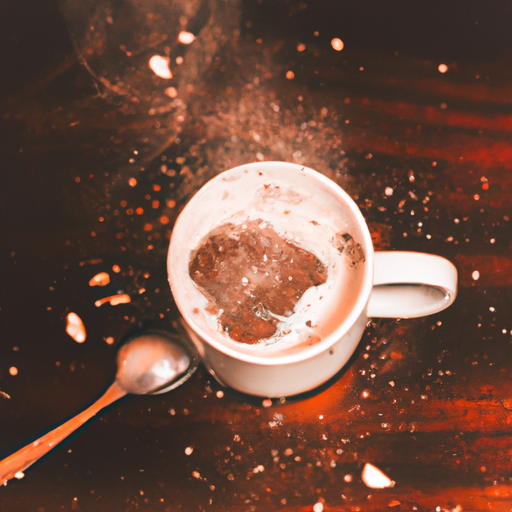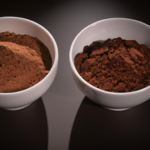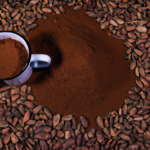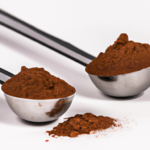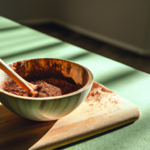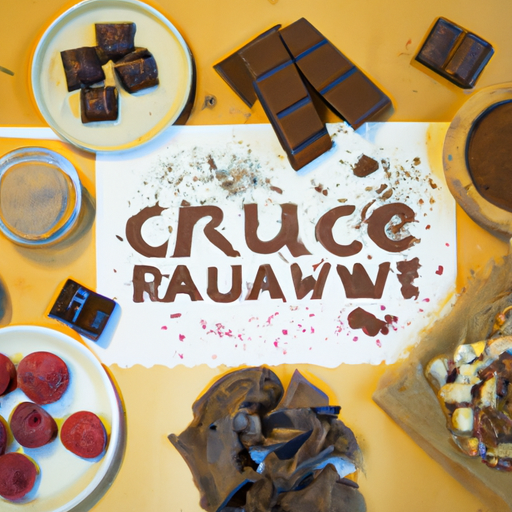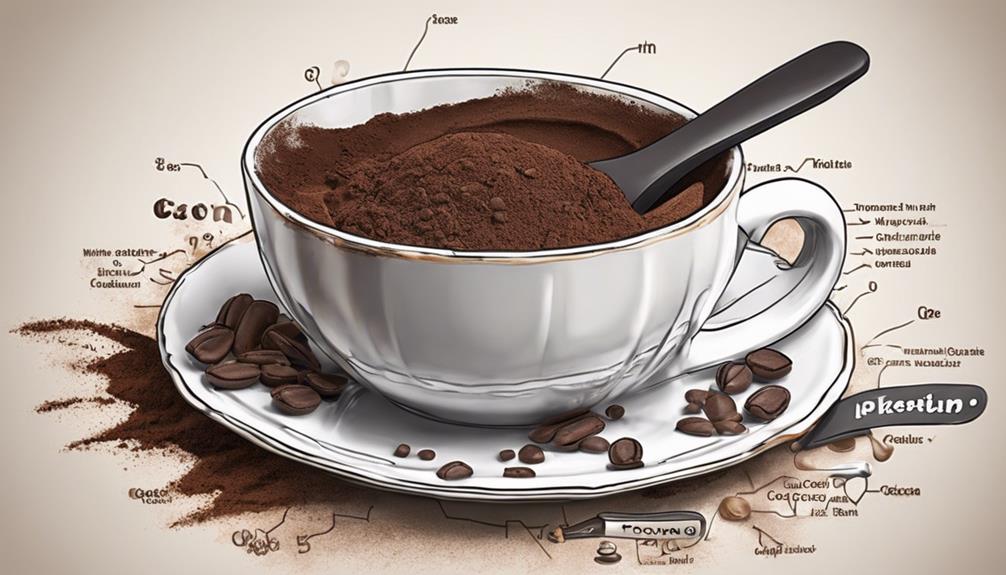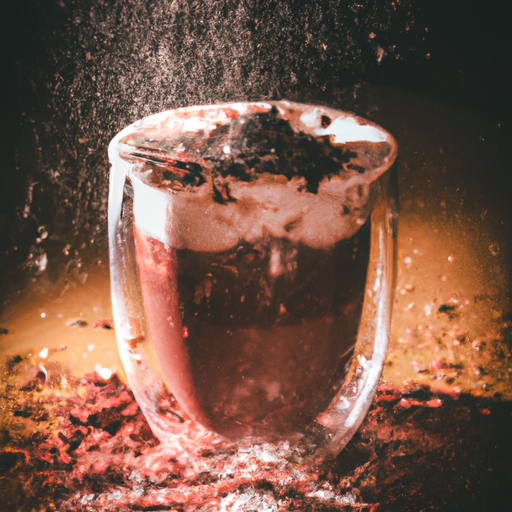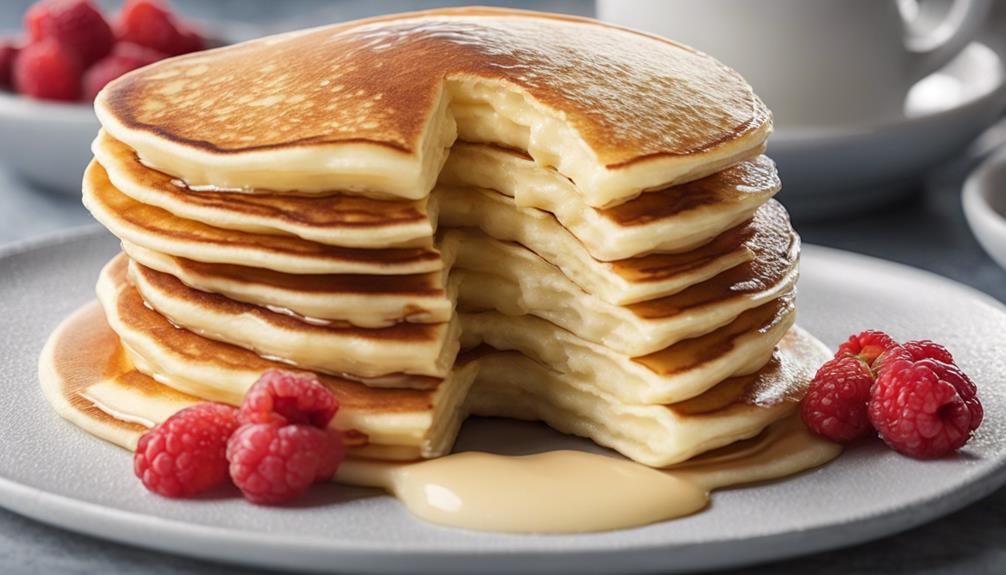I understand your skepticism – you might believe that chocolate is not good for your health, right? But you’re about to be pleasantly surprised. Raw cacao powder, the most natural form of chocolate, has numerous health benefits. And I’m not referring to the sugary, processed chocolate bars you see at the store. I’m talking about the authentic version – raw cacao powder, derived from cacao tree seeds.
In this article, we will explore the nutritional profile of raw cacao powder and its mood-boosting and energy-boosting effects. We will also delve into its antioxidant power, heart health benefits, improved cognitive function, weight management support, and even its impact on skin health. Additionally, we will discuss practical ways to incorporate this superfood into your daily diet.
So, if you’re ready to indulge in some guilt-free chocolate goodness and reap the amazing health benefits, keep reading. You’ll be pleasantly surprised by what raw cacao powder has to offer.
Key Takeaways
- Raw cacao powder is rich in flavonoids and antioxidants, which improve blood flow to the skin and contribute to a healthier complexion.
- It can be incorporated into the diet in various ways, such as adding it to smoothies for antioxidants and minerals, mixing it with dates and nuts for healthy raw brownie bites, or sprinkling it over oatmeal or yogurt for a delightful twist.
- Raw cacao powder is a healthier alternative to processed cocoa powder in baking and can be used to achieve a youthful and vibrant complexion.
- It provides numerous health benefits, including supporting cardiovascular health, improving cognitive function, aiding in weight management, and promoting digestive health and regularity.
Nutritional Profile of Raw Cacao Powder
Get ready to indulge in the guilt-free pleasure of raw cacao powder. Its nutritional profile is packed with goodness that will leave you feeling energized and satisfied.
Raw cacao powder is not only delicious but also a versatile ingredient in baking. It adds a rich, chocolatey flavor to cakes, cookies, and smoothies, making it a must-have for any baking enthusiast.
Additionally, raw cacao powder is a great source of essential minerals like magnesium, iron, and potassium. These minerals are important for maintaining optimal health.
However, it’s important to note that raw cacao powder contains caffeine. This may cause potential side effects such as jitteriness or difficulty sleeping in some individuals.
Nevertheless, don’t worry because in the next section, we’ll explore the mood-boosting effects of raw cacao powder.
Mood-Boosting Effects
Indulge in the rich and creamy delight of raw cacao powder, and let it uplift your mood like never before.
Not only does raw cacao powder satisfy your chocolate cravings, but it also has mood-boosting effects. The key lies in its high content of tryptophan, an amino acid that helps produce serotonin, a neurotransmitter responsible for regulating mood.
Studies have shown that cacao can improve symptoms of depression and anxiety, promoting a sense of well-being and relaxation.
Incorporating raw cacao powder into your diet is easy with a variety of delicious cacao recipes available. From smoothies and desserts to homemade energy bars, the options are endless.
So, let raw cacao powder be your ally in enhancing mental health and bringing joy to your day.
Now, let’s explore its energy-boosting properties.
Energy-Boosting Properties
Immerse yourself in a burst of revitalizing energy as you savor the invigorating effects of raw cacao powder, fueling your day with renewed vitality and vigor. Raw cacao powder is renowned for its energy-boosting properties, making it a natural alternative to caffeine-laden drinks. Unlike coffee and energy drinks that provide a temporary energy spike followed by a crash, raw cacao powder offers sustained energy throughout the day.
This is due to its rich content of theobromine, a natural stimulant that promotes alertness without the jitters or energy crashes commonly associated with caffeine. Theobromine works by widening blood vessels, increasing blood flow, and delivering a steady stream of oxygen and nutrients to the brain and muscles.
To further illustrate the energy-boosting power of raw cacao powder, refer to the table below:
| Raw Cacao Powder | Energy-Boosting Properties |
|---|---|
| Theobromine | Promotes alertness and sustained energy |
| Natural Alternative | Caffeine-laden drinks |
| No Jitters | Provides energy without crashes |
With its natural alternatives to caffeine and ability to provide sustained energy, raw cacao powder is an excellent choice for those seeking a healthy and revitalizing boost. In the next section, we will explore the antioxidant power of raw cacao powder.
Antioxidant Power
Experience the incredible antioxidant power found within the invigorating properties of raw cacao. It works to protect your body against free radicals and promote overall well-being.
Raw cacao powder is packed with antioxidants. These compounds help fight against oxidative stress and inflammation in the body. Antioxidants like flavonoids and polyphenols have numerous health benefits. They can reduce the risk of chronic diseases such as heart disease and cancer.
Incorporating raw cacao powder into your diet is simple. You can add it to smoothies, oatmeal, or homemade energy bars. There are also plenty of delicious raw cacao recipes available, such as raw cacao brownies or chocolate avocado mousse.
Start incorporating this antioxidant-rich ingredient into your diet and experience the incredible health benefits it has to offer.
Now, let’s move on to the next section about the heart health benefits of raw cacao powder.
Heart Health Benefits
Get your heart pumping with the incredible perks of incorporating raw cacao into your diet.
Raw cacao powder is packed with powerful antioxidants that can help prevent heart disease and promote cardiovascular health. Studies have shown that the flavonoids found in raw cacao can reduce inflammation and improve blood flow, which in turn lowers the risk of heart disease.
These flavonoids also have the ability to lower blood pressure and reduce LDL cholesterol levels, further protecting the heart. By adding raw cacao powder to your diet, you can give your heart the love it deserves.
And that’s not all! Raw cacao powder has also been linked to improved cognitive function, so let’s dive into the next section and explore its brain-boosting benefits.
Improved Cognitive Function
Boost your brainpower with the incredible effects of incorporating raw cacao into your daily routine – it’s like a secret weapon for unlocking your cognitive potential!
Raw cacao powder contains numerous compounds that support cognitive enhancement and mental clarity. One of these compounds is flavanols, which have been shown to improve blood flow to the brain, increasing oxygen and nutrient delivery. This boost in circulation can enhance cognitive function, including memory, focus, and attention.
Additionally, raw cacao is rich in antioxidants, which protect brain cells from oxidative stress and inflammation. These protective effects may help prevent age-related cognitive decline and improve overall brain health.
So, by adding raw cacao powder to your diet, you can enjoy the benefits of improved cognitive function.
Now, let’s explore how it can also support weight management.
Weight Management Support
Take control of your weight and achieve your wellness goals with the help of raw cacao’s powerful support for managing your weight.
Raw cacao powder offers several weight loss benefits and can be a valuable addition to your diet. One of the main reasons for this is its ability to aid in appetite control. Raw cacao contains compounds that can help regulate the hormones responsible for hunger and fullness, promoting a feeling of satiety and reducing overeating.
Additionally, the fiber content in raw cacao powder can also contribute to weight management by promoting healthy digestion and preventing constipation.
Incorporating raw cacao into your daily routine, such as adding it to smoothies or using it in baking, can be a practical and delicious way to support your weight loss journey.
Transitioning into the subsequent section about ‘skin health benefits,’ raw cacao’s impact on our overall well-being extends beyond just weight management.
Skin Health Benefits
Indulging in the goodness of raw cacao can do wonders for your skin, leaving it radiant and glowing. Raw cacao powder is a natural skincare ingredient that is packed with antioxidants. These antioxidants help protect the skin from damage caused by free radicals. They also have anti-aging properties, reducing the appearance of fine lines and wrinkles.
Additionally, raw cacao powder contains flavonoids that improve blood flow to the skin. This results in a healthier complexion. To incorporate raw cacao powder into your diet, you can add it to smoothies, sprinkle it on top of yogurt or oatmeal, or use it as a replacement for cocoa powder in baking recipes.
By nourishing your skin from the inside out with raw cacao powder, you can achieve a youthful and vibrant complexion.
How to Incorporate Raw Cacao Powder into Your Diet
To incorporate raw cacao powder into your diet, here are some ways to enjoy this superfood:
- Add a tablespoon of raw cacao powder to your morning smoothie for a chocolatey boost of antioxidants and minerals.
- Make a decadent and healthy dessert by mixing raw cacao powder with dates and nuts to create raw brownie bites.
- Sprinkle raw cacao powder over your oatmeal or yogurt for a delightful twist.
- Use raw cacao powder in baking recipes as a healthier alternative to processed cocoa powder.
When it comes to the recommended dosage, it’s generally safe to consume up to 2 tablespoons of raw cacao powder per day. However, it’s important to listen to your body and adjust the amount based on your individual tolerance.
Enjoy experimenting with different recipes and savor the benefits of raw cacao powder in your diet.
Frequently Asked Questions
Can raw cacao powder help improve digestion or relieve constipation?
Raw cacao powder can help improve digestion and relieve constipation by promoting gut health and regular bowel movements. It contains fiber and magnesium, which aid in digestion and support a healthy digestive system.
Is raw cacao powder safe for children to consume?
Raw cacao powder can be safe for children to consume in moderation. However, it is important to be aware of potential risks such as caffeine sensitivity, allergies, and high sugar content in some products.
Can raw cacao powder be used as a natural remedy for headaches or migraines?
Raw cacao powder can potentially be used as a natural remedy for headaches or migraines due to its high magnesium content. Additionally, maintaining a healthy diet and exploring other natural remedies for insomnia may also help alleviate migraines.
Does raw cacao powder contain caffeine?
Yes, raw cacao powder contains caffeine. However, it can also provide digestion improvement, constipation relief, and safe for children when consumed in moderation. It may also help as a headache or migraine remedy and reduce blood pressure.
Can raw cacao powder help lower blood pressure?
Raw cacao powder has a powerful impact on heart health, playing a role in managing hypertension. Its beneficial properties support healthy blood pressure levels, making it a valuable addition to a heart-healthy lifestyle.
What are the specific health benefits of raw cacao powder?
Raw cacao powder benefits include a rich source of antioxidants, which can help protect the body from free radical damage. It is high in magnesium, which supports heart health and can aid in muscle relaxation. Additionally, raw cacao powder benefits include potential mood-boosting effects due to its serotonin-boosting compounds.
Conclusion
In conclusion, raw cacao powder is a powerhouse of health benefits. Its nutritional profile, including high levels of antioxidants and minerals, makes it a great addition to any diet.
Not only does it boost mood and energy levels, but it also supports heart health, improves cognitive function, aids in weight management, and promotes healthy skin.
So why not indulge in the blissful delight of raw cacao powder and let it be the cherry on top of your healthy lifestyle sundae?
It’s time to savor the sweet rewards of this natural wonder.

